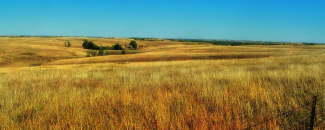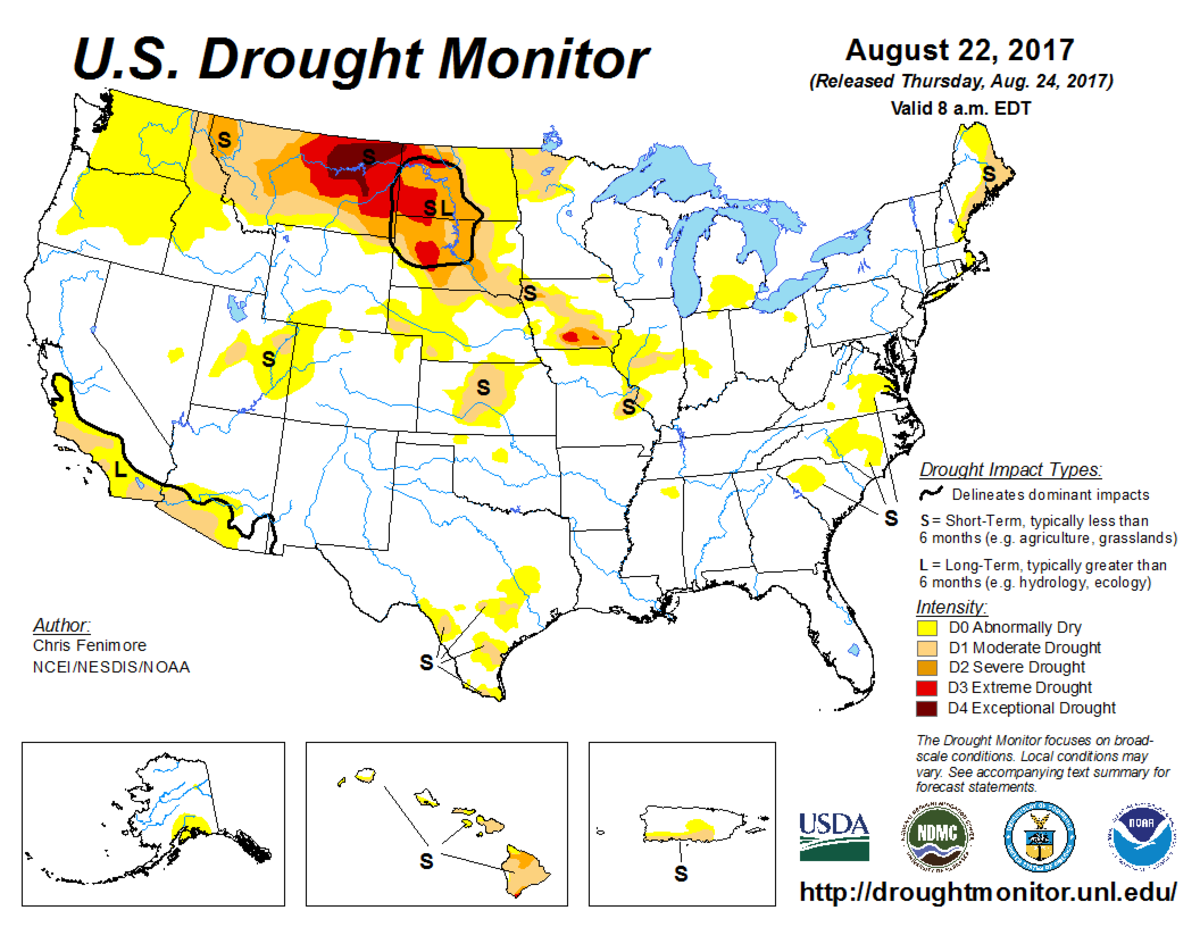
According to the August 22, 2017, U.S. Drought Monitor, moderate to exceptional drought covers 12.1% of the contiguous United States, an increase from last week’s 11.3%. The worst drought categories (extreme to exceptional drought) decreased slightly from 2.5% last week to 2.4%.
The upper-level circulation during this U.S. Drought Monitor week consisted of several troughs and ridges migrating quickly eastward in a westerly flow. With the jet stream near the Canadian border, most surface low pressure systems followed a storm track across the northern states. The lows and their trailing cold fronts generated bouts of heavy rain across parts of the central to northern Plains into the Midwest. The storm track and fronts kept a steady flow of cooler Canadian air across the northern Rockies to northern Plains, resulting in below-normal weekly temperatures.
Upper-level ridging, with help from the North Pacific and North Atlantic Highs, kept precipitation below normal across the Southeast and most of the West, and temperatures warmer than normal across the eastern third of the contiguous United States. As a result, drought and abnormal dryness contracted in the central to northern Plains and expanded in Montana and the northern Rockies.
Abnormal dryness and drought are currently affecting over 64.5 million people across the United States—about 20.7% of the country’s population.

The full U.S. Drought Monitor weekly update is available from Drought.gov.
In addition to Drought.gov, you can find further information on the current drought as well as on this week’s Drought Monitor update at the National Drought Mitigation Center. See their recent news releases.
The most recent U.S. Drought Outlook is available from NOAA’s Climate Prediction Center and the U.S. Department of Agriculture provides information about the drought’s influence on crops and livestock.
For additional drought information, follow #DroughtMonitor on Facebook and Twitter.



